 To enhance service speed and avoid tariff delays, we've opened a US warehouse. All US orders ship directly from our US facility.
To enhance service speed and avoid tariff delays, we've opened a US warehouse. All US orders ship directly from our US facility.
| Cat. No. | Product Name | Field of Application | Chemical Structure |
|---|---|---|---|
| DC60460 | SJ3149 Featured |
SJ3149 is a highly selective and potent molecular glue degrader targeting CK1α protein, exhibiting broad antiproliferative activity. It is a valuable tool for cancer research.
More description
|

|
| DC50173 | dCeMM4 Featured |
dCeMM4 (Compound 5) is a molecular glue degrader that facilitates the ubiquitination and degradation of cyclin K. It achieves this by promoting an interaction between the CDK12-cyclin K complex and the CRL4B ligase complex.
More description
|
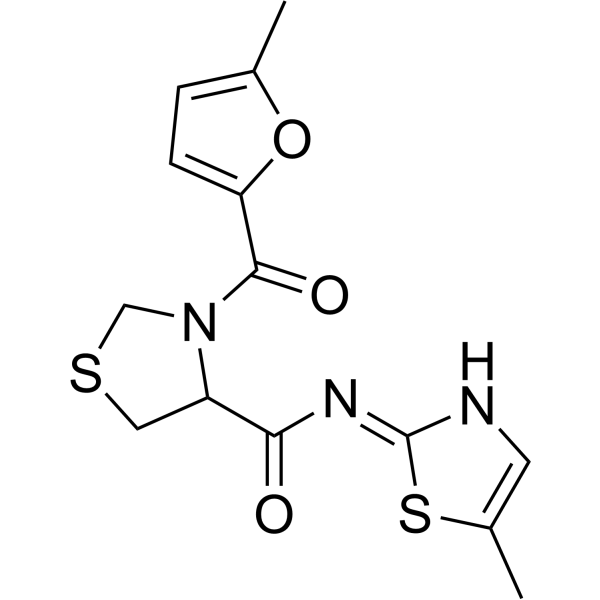
|
| DC60618 | dWIZ-2 Featured |
dWIZ-2 is a molecular glue degrader of the WIZ transcription factor that robustly induce HbF in erythroblasts. dWIZ-2 shows improved pharmacokinetic (PK) properties than dWIZ-1.
More description
|
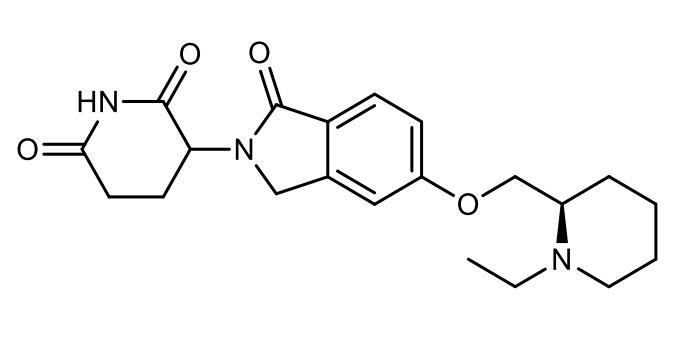
|
| DC60676 | MRT6160 Featured |
MRT-6160 represents a groundbreaking molecular glue degrader designed to selectively target VAV1, achieving its proteasomal degradation with a DC50 value of 7 nM. This innovative compound showcases its unique mechanism and therapeutic potential.
More description
|

|
| DC67343 | DS17 Featured |
DS17 is a high-efficiency molecular glue degrader that specifically induces the degradation of cyclin K, demonstrating remarkable potency with an EC50 of 13 nM. By exploiting the ubiquitin-proteasome system, DS17 effectively eliminates cyclin K, a critical regulator of transcription and cell cycle progression, positioning it as a valuable tool in cancer research and drug discovery.
More description
|

|
| DC67328 | ALV1 Featured |
ALV1 is a molecular glue degrader targeting Ikaros (IKZF1) and Helios (IKZF2), with DC50 values of 2.5 nM and 10.3 nM, respectively. It binds to CRBN with an IC50 of 0.55 µM and induces CRBN-Helios dimerization. ALV1 is a valuable tool for studying the properties and functions of regulatory T cells (Treg cells).
More description
|

|
| DC60701 | ZZ3 Featured |
ZZ3 is a potent CDK12/13 molecular glue degrader with DC50 of 35 nM and 57 nM, respectively.
More description
|
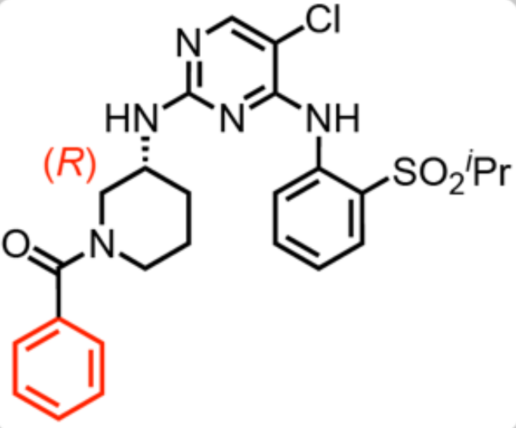
|
| DC28734 | 6RK73 Featured |
6RK73 is a covalent irreversible and specific UCHL1 inhibitor with an IC50 of 0.23 µM. 6RK73 shows almost no inhibition of UCHL3 (IC50=236 µM). 6RK73 specifically inhibit UCHL1 activity in breast cancer.
More description
|

|
| DC65513 | HYNIC-FAPI-04 Featured |
HYNIC-FAPI-04 is a useful ligand for making [99mTc]Tc-HYNIC-FAPI-04. In vitro experiments, the results indicated that [99mTc]Tc-HYNIC-FAPI-04 showed binding properties, and inhibited the migration of tumor cells. The [99mTc]Tc-HYNIC-FAPI will be a promising SPECT/CT imaging probe.
More description
|
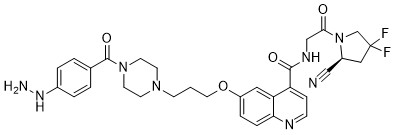
|
| DC67548 | NOP-1A Featured |
NOP-1A standard. 11C-NOP-1A is a new radioligand for thenociceptin/orphanin FQ peptide (NOP) receptor, with high affinity (Ki, 0.15 nM) and appropriate lipophilicity (measured logD, 3.4) for PET brain imaging. 11C-NOP-1A is the the first successful radioligand to image NOP receptors in rat and monkey brain. 11C-NOP-1A is a selective antagonist at the NOP receptor and has high affinity and appropriate lipophilicity for blood–brain barrier permeability. 11C-NOP-1A imaging in rhesus monkeys showed high brain uptake and a large receptor-specific signal and could be quantified with the gold standard method of compartmental modeling. In humans 1C-NOP-1A reliably quantified NOP receptors in human brain both in large brain regions and at a voxelwise level using parametric imaging. The radiation absorbed dose in humans was similar to that observed with other 11C-labeled ligands and would allow multiple scans of a single subject. Thus, 11C-NOP-1A is a promising radioligand for reliably quantifying NOP receptors in human brain.
More description
|
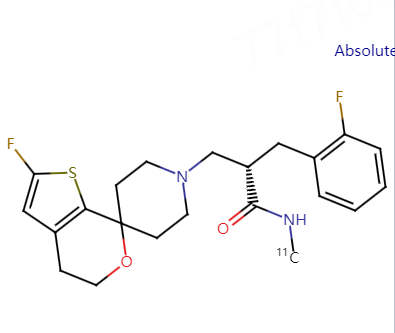
|
| DC67547 | NOP-1A Precursor Featured |
The Precursor of NOP-1A. (11)C-NOP-1A is a useful radioligand for quantifying NOP receptors in the monkey brain, and its radiation dose is similar to that of other (11)C-labeled ligands for neuroreceptors.
More description
|
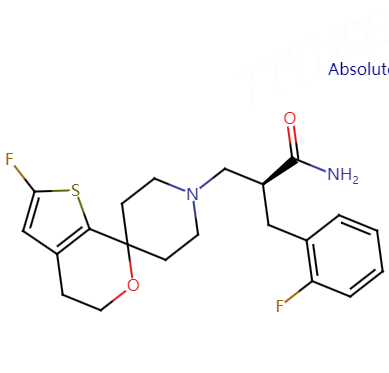
|
| DC70489 | HL-43 Featured |
HL-43 (EP4 antagonist HL-43) is a selective prostaglandin E receptor 4 (EP4) antagonist, promotes chondrocyte differentiation/cartilage regeneration and anabolism with low toxicity;
HL-43 exhibits the highest potency in inducing Col2a1 expression and reducing Mmp3 expression in presence of IL-1β.
HL-43 downregulats Mmp3/13 expression in a dose-dependent manner.
HL-43 induces anabolic factors (ACAN and SOX9), and suppresses catabolic factor (MMP13), and hypertrophic marker (COLX), inhibits the STAT3 catabolic pathway;.
HL-43 promotes chondrocyte differentiation and ECM generation, and inhibits matrix degradation in both human and mouse articular cartilage explants.
HL-43 enhances cartilage repair and regeneration in different artilage defect (CD) animal models.
More description
|

|
| DC8374 | Enasidenib ( AG-221) Featured |
Enasidenib is an oral, potent, reversible, selective inhibitor of the IDH2 mutant enzymes, with IC50s of 100 and 400 nM against IDH2R140Q and IDH2R172K, respectively.
More description
|

|
| DC60623 | CNDR-51997 Featured |
CNDR-51997 is a brain-penetrant microtubule alterations-stabilizing small molecule and reduces both Aβ plaque and tau inclusion pathology in established mouse models of Alzheimer's disease.
More description
|
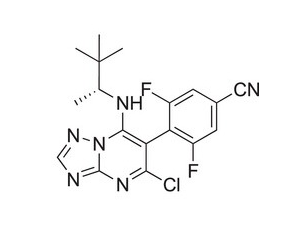
|
| DC67297 | SM6.1 (αvβ6 ligand) Featured |
SM-6.1 is a small molecule delivery vehicle developed by Arrowhead, targeting αvβ6, which selectively delivers therapeutic siRNA to lung epithelial cells and mediates durable gene silencing post-inhalation.
More description
|

|
| DC10132 | AMG9810 Featured |
AMG9810 is a potent and selective, competitive vanilloid TRPV1 receptor antagonist (IC50 = 17 nM).
More description
|

|
| DC7140 | GSK1070916 Featured |
GSK1070916 is a reversible and ATP-competitive inhibitor of Aurora B/C with IC50 of 3.5 nM/6.5 nM; displays >100-fold selectivity against the closely related Aurora A-TPX2 complex(IC50=490 nM).
More description
|

|
| DC73586 | STAT3-SH2 domain inhibitor 1 Featured |
STAT3-SH2 domain inhibitor 1 is a potent Src Homology 2 (SH2) Domain of STAT3 (STAT3-SH2 domain) inhibitor with a Kd value of 1.57 μM. STAT3-SH2 domain inhibitor 1 inhibits STAT3 signaling transduction and transcriptional activation. STAT3-SH2 domain inhibitor 1 induces apoptosis in gastric cancer cells. STAT3-SH2 domain inhibitor 1 can be used in research of cancer.
More description
|
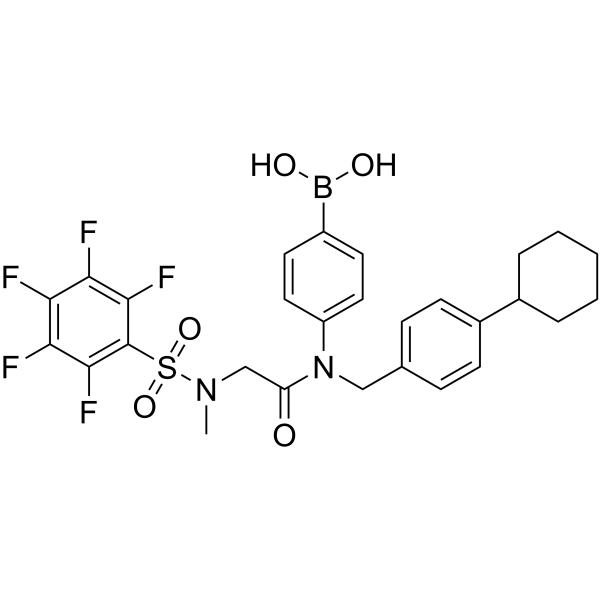
|
| DC7055 | AMG517 Featured |
AMG 517 is a potent and selective TRPV1 antagonist, antagonizes capsaicin, proton, and heat activation of TRPV1 with IC50 of 0.76 nM, 0.62 nM and 1.3 nM.
More description
|

|
| DC73961 | CW5107 Featured |
CW5107 (CW 5107) is a small molecule HSD17B7 inhibitor that enhances oligodendrocyte formation.
More description
|
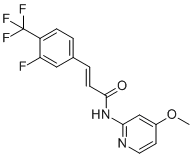
|
| DC7188 | Lomeguatrib(PaTrin-2) Featured |
Lomeguatrib (PaTrin-2) is a modified guanine base, which can repress the activity of DNA repair protein O(6)-alkylguanine-DNA alkyltransferase (MGMT) with an IC50 value of 6 nM.
More description
|

|
| DC10223 | Benzocaine hydrochloride Featured |
Benzocaine hydrochloride is a surface anesthetic that acts by preventing transmission of impulses along nerve fibers and at nerve endings.
More description
|
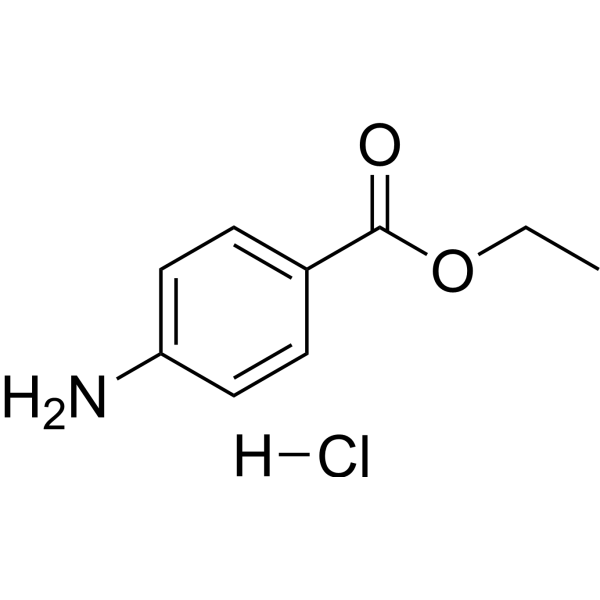
|
| DC11103 | Tavapadon Featured |
Tavapadon is a potent, orally-bioavailable, selective partial agonist of the dopamine D1 and D5 receptors.
More description
|

|
| DC80023 | DSPE-PEG2000-DBCO Featured |
DSPE-PEG-DBCO ammonium is the ammonium salt form of DSPE-PEG-DBCO. DSPE-PEG-DBCO ammonium is utilized in copper-free click chemistry through SPAAC conjugation with an azido-functionalized peptide ligand. DSPE-PEG-DBCO ammonium is applied in drug-delivery and nanoparticle research.
More description
|

|
| DC67545 | 4-nonanoyloxy-3-(nonanoyloxymethyl)butanoic acid Featured |
Tail of CICL-1 lipid
More description
|

|
| DC67118 | PNI 132 Featured |
PNI 132, an ionizable lipid derived from the patent WO2020252589A developed by Precision Nanosystem, is useful in the formulation of lipid nanoparticles.
More description
|

|
| DC41285 | TFAX 488,SE dilithium Featured |
TFAX 488,SE dilithium, an amine reactive green fluorescent dye, is insensitive to pH in the range 4-10. TFAX 488,SE dilithium forms bright and photostable conjugates with proteins and antibodies. TFAX 488,SE dilithium is suitable for use in flow cytometry, two-photon excitation microscopy (TPE), and super resolution microscopy techniques, such as dSTORM, SIM and STED. Excitation maximum=495 nm; emission maximum=515 nm; extinction coefficient=73,000 M-1cm-1; quantum yield=0.92.
More description
|

|
| DC8797 | Lacosamide Featured |
Lacosamide (Vimpat; Erlosamide) is a medication developed for the adjunctive treatment of partial-onset seizures and diabetic neuropathic pain.
More description
|

|
| DC73569 | Lepzacitinib (ATI-1777) Featured |
Lepzacitinib is a Janus kinase inhibitor targeting to JAK 1/3. Lepzacitinib exhibits anti-inflammatory effect and inhibits atopic dermatitis and other skin diseases.
More description
|
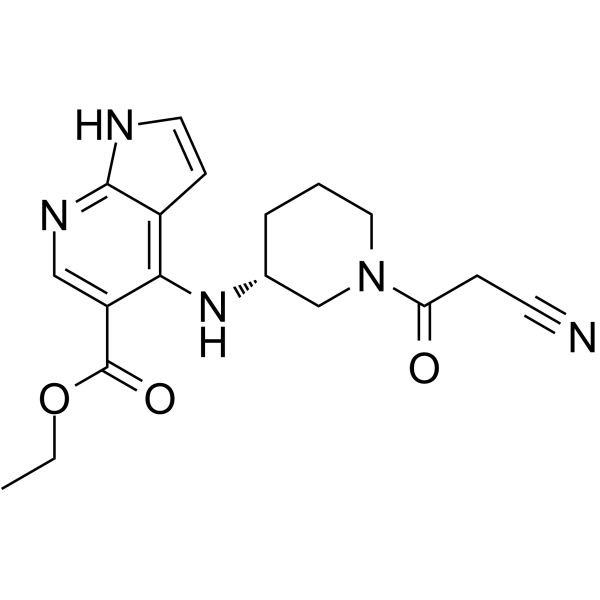
|
| DC32483 | GTP14564 Featured |
GTP-14564 is a specific kinase inhibitor for ITD-FLT3. GTP-14564 inhibited the growth of interleukin-3-independent Ba/F3 expressing ITD-FLT3 at 1 microM, whereas a 30-fold higher concentration of GTP-14564 was required to inhibit FLT3 ligand-dependent growth of Ba/F3 expressing wild type FLT3 (wt-FLT3).
More description
|
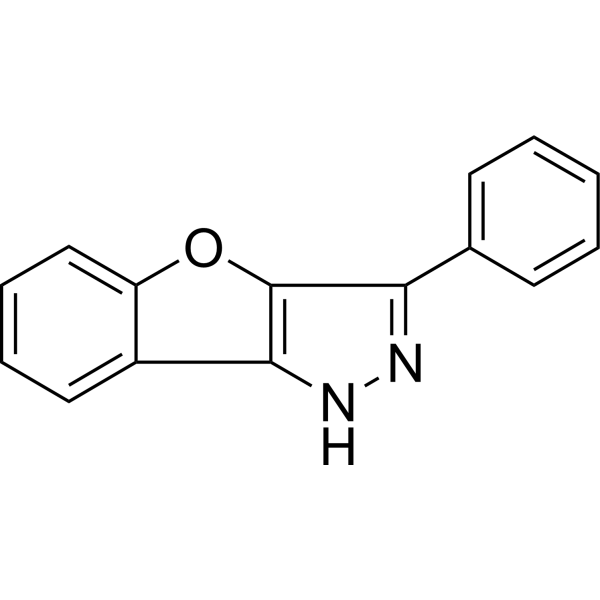
|